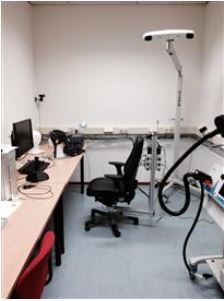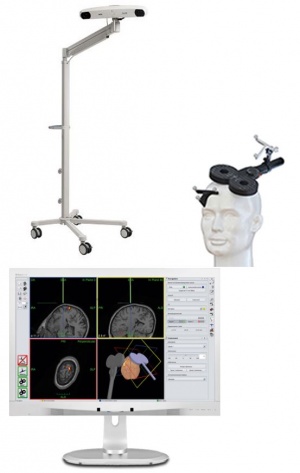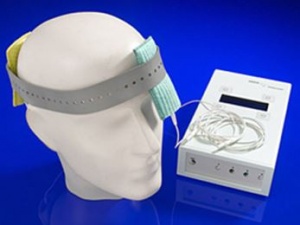Difference between revisions of "TMS Lab"
Wiki-admin (talk | contribs) |
Wiki-admin (talk | contribs) |
||
| Line 65: | Line 65: | ||
[[File:NeuroConn.JPG|thumb|left|300px|NeuroConn]]<br clear=all> | [[File:NeuroConn.JPG|thumb|left|300px|NeuroConn]]<br clear=all> | ||
| − | |||
| − | |||
| − | |||
| − | |||
| − | |||
| − | |||
| − | |||
| − | |||
| − | |||
| − | |||
| − | |||
| − | |||
| − | |||
| − | |||
| − | |||
| − | |||
| − | |||
| − | |||
| − | |||
| − | |||
| − | |||
| − | |||
| − | |||
| − | |||
| − | |||
| − | |||
| − | |||
| − | |||
| − | |||
| − | |||
| − | |||
| − | |||
==References== | ==References== | ||
<references /> | <references /> | ||
Revision as of 15:05, 29 January 2018
 TMS in 2018 | |
| Location | B.00.30 |
|---|---|
| Manuals | |
MagVenture TMS stimulator
In the TMS lab, two MagPro X100 TMS stimulators available, one of them has the 'option' included, as described below.
• MagVenture X100 system
The core of the setup is the MagVenture MagPro X100 with option stimulator. This system is capable of producing 4 types of waveforms, namely:
- Biphasic,
- BiPhasic Burst,
- Half Sine
- MonoPhasic
The MagOption added to the MagPro X100 also gives it the following enhanced stimulation capabilities for Biphasic, Half Sine and Monophasic:
- Dual pulses with up to 20 pulse pairs per second repetition rate
- Advanced power pulse feature adding 40% additional stimulation power
• MCF-B65 spoel, butterfly, statisch gekoeld
Localite TMS Navigator is an image-guided tool to assist in the positioning of a transcranial magnetic stimulator (TMS) coil over a subject's brain. The Localite system includes the software, position sensor and all the related hardware (except the TMS-stimulator) to perform image-guided TMS.
Small objects, called trackers, are attached to the TMS coil, and the subject. These trackers are monitored, or "seen" by an optical position sensor (optical camera). This information is send to a computer which, after a calibration procedure, displays the position and orientation of the coil on the subject's individual MRI.
Thus, Localite TMS Navigator helps to position the coil very precisely in reference to the subjects brain shown in an individual anatomical MR dataset.
Information sheets on how to use the Localite are available in the TMS lab. The complete Localite manual is available at the labmanager (Dennis Schutter).
NeuroConn Transcranial Electric Current Stimulation
- microprocessor controlled constant current source
- 1 channel, anodal and cathodal stimulation possible
- use of external trigger possible, several AC-DC-STIMULATOR devices can be synchronized for multichannel stimulation
- adjustable current up to 5,000 µA (±1%)
- adjustable application time up to 30 min
- please note: currents of more than 1,000 µA and application times of more than 15 min are for research purposes only!
- modes of stimulation:
- single (continuous stimulation, freely adjustable fading in and fading out)
- pulses (cyclic turning on and off of the stimulation, defined pulse width and interstimulus intervall ISI)
- customer specific programs possible (e.g. sine wave, half-sine wave etc.)
- high safety standard through multistage monitoring of output current
- STUDY MODE OPTION
- INTERNAL & EXTERNAL TRIGGER MODULE
Technical data
- 135 mm x 225 mm x 55 mm (W x D x H); weight 0.9 kg
- 12bit D/A conversion
- power consumption approx. 0.4 W
- power supply via built-in rechargeable batteries, incl. external charger
- alphanumeric display with backlight

